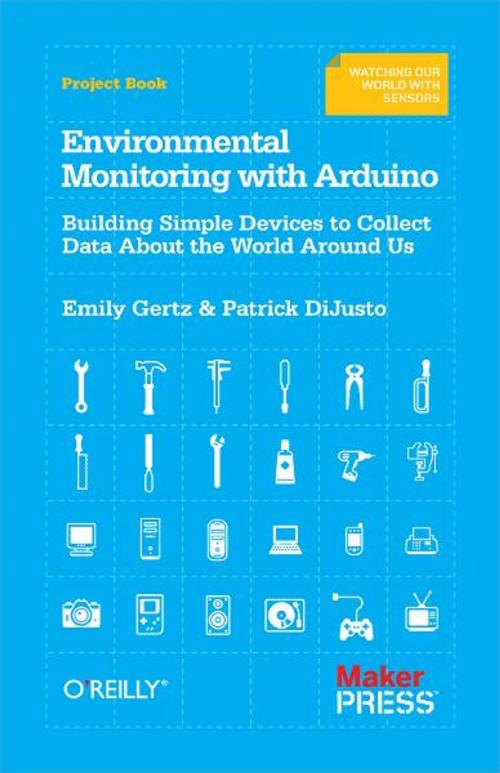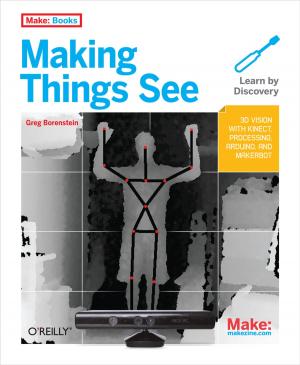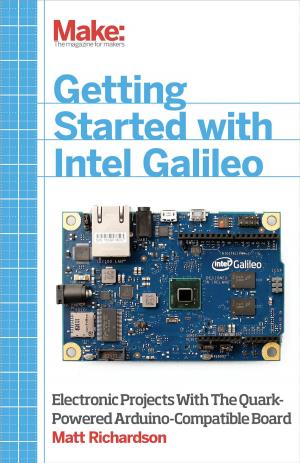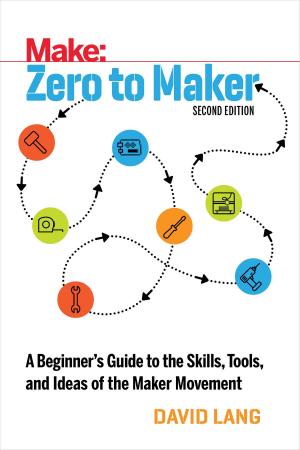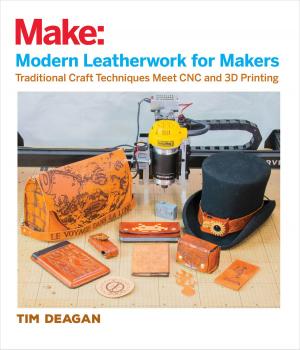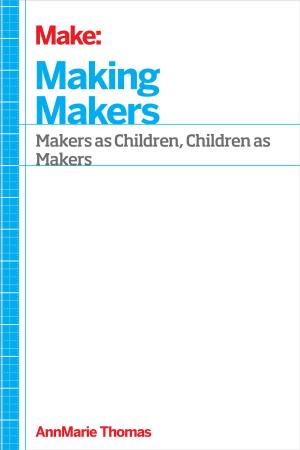Environmental Monitoring with Arduino
Building Simple Devices to Collect Data About the World Around Us
Nonfiction, Science & Nature, Science, Physics, Radiation, Computers, Programming, Programming Languages, C & C++, C| Author: | Emily Gertz, Patrick Di Justo | ISBN: | 9781449328610 |
| Publisher: | Maker Media, Inc | Publication: | January 26, 2012 |
| Imprint: | Maker Media, Inc | Language: | English |
| Author: | Emily Gertz, Patrick Di Justo |
| ISBN: | 9781449328610 |
| Publisher: | Maker Media, Inc |
| Publication: | January 26, 2012 |
| Imprint: | Maker Media, Inc |
| Language: | English |
After the devastating tsunami in 2011, DYIers in Japan built their own devices to detect radiation levels, then posted their finding on the Internet. Right now, thousands of people worldwide are tracking environmental conditions with monitoring devices they’ve built themselves. You can do it too!
This inspiring guide shows you how to use Arduino to create gadgets for measuring noise, weather, electromagnetic interference (EMI), water purity, and more. You’ll also learn how to collect and share your own data, and you can experiment by creating your own variations of the gadgets covered in the book. If you’re new to DIY electronics, the first chapter offers a primer on electronic circuits and Arduino programming.
- Use a special microphone and amplifier to build a reliable noise monitor
- Create a gadget to detect energy vampires: devices that use electricity when they’re “off”
- Examine water purity with a water conductivity device
- Measure weather basics such as temperature, humidity, and dew point
- Build your own Geiger counter to gauge background radiation
- Extend Arduino with an Ethernet shield—and put your data on the Internet
- Share your weather and radiation data online through Pachube
After the devastating tsunami in 2011, DYIers in Japan built their own devices to detect radiation levels, then posted their finding on the Internet. Right now, thousands of people worldwide are tracking environmental conditions with monitoring devices they’ve built themselves. You can do it too!
This inspiring guide shows you how to use Arduino to create gadgets for measuring noise, weather, electromagnetic interference (EMI), water purity, and more. You’ll also learn how to collect and share your own data, and you can experiment by creating your own variations of the gadgets covered in the book. If you’re new to DIY electronics, the first chapter offers a primer on electronic circuits and Arduino programming.
- Use a special microphone and amplifier to build a reliable noise monitor
- Create a gadget to detect energy vampires: devices that use electricity when they’re “off”
- Examine water purity with a water conductivity device
- Measure weather basics such as temperature, humidity, and dew point
- Build your own Geiger counter to gauge background radiation
- Extend Arduino with an Ethernet shield—and put your data on the Internet
- Share your weather and radiation data online through Pachube
